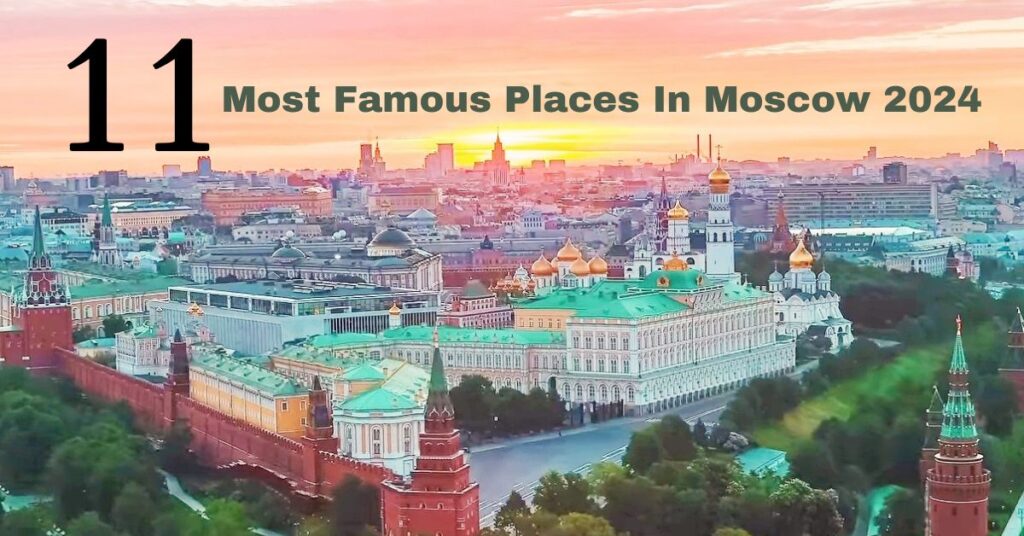Explore Russia’s vibrant heart with our list of the “11 Most Famous Places in Moscow in 2024.” Moscow, a city rich in history and adorned with incredible buildings, provides an unforgettable trip through history and society. See the famous sites that reflect Moscow’s essence and make it a must-see destination in 2024 when you start on a virtual tour.
Moscow, the capital of Russia, is a city of cultural richness, architectural grandeur, and historical significance. As 2024 approaches, it continues to captivate visitors with its blend of iconic landmarks and hidden treasures. This guide offers an overview of the 11 most famous places in Moscow, highlighting the city’s rich history, culture, and modernity.
1) Red Square
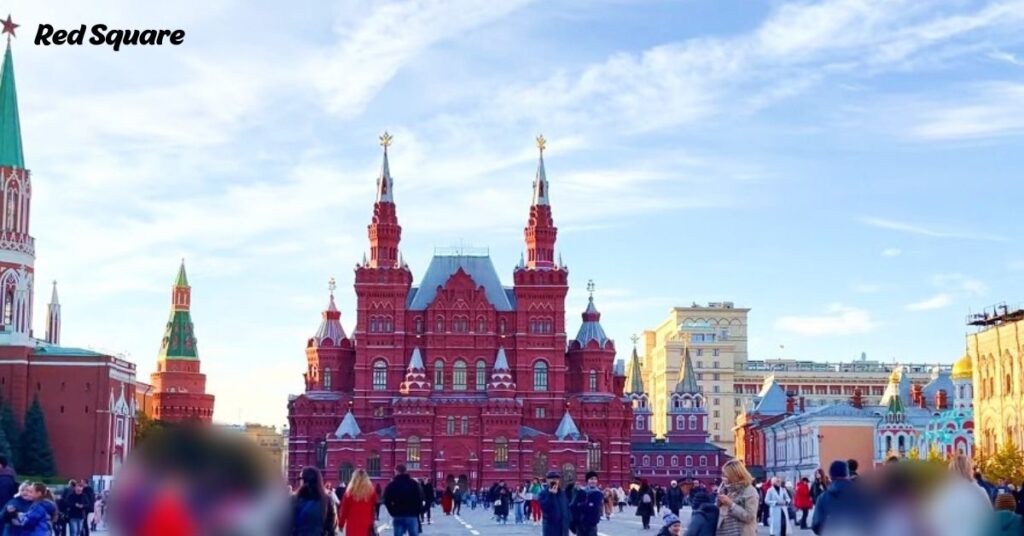
Red Square, located in the heart of Moscow, is a vibrant symbol of the city’s rich history and lively culture. Originally known as “Beautiful Square” during the 15th century, it has transformed into “Red Square” to represent its beauty and significance.
Spanning 330 meters in length and 70 meters in width, this square has been a witness to pivotal moments in Russia’s history, from its origins as a marketplace in the 17th century to the renowned military parades of the Soviet era.
Surrounding the square are some of Moscow’s most iconic landmarks, such as Saint Basil’s Cathedral, the State Historical Museum, and the elegant GUM department store. Red Square not only attracts tourists from all over the world but also holds a special place in the hearts of Muscovites, serving as a central gathering point for national holidays, concerts, and festivals.
2) St. Basil’s Cathedral
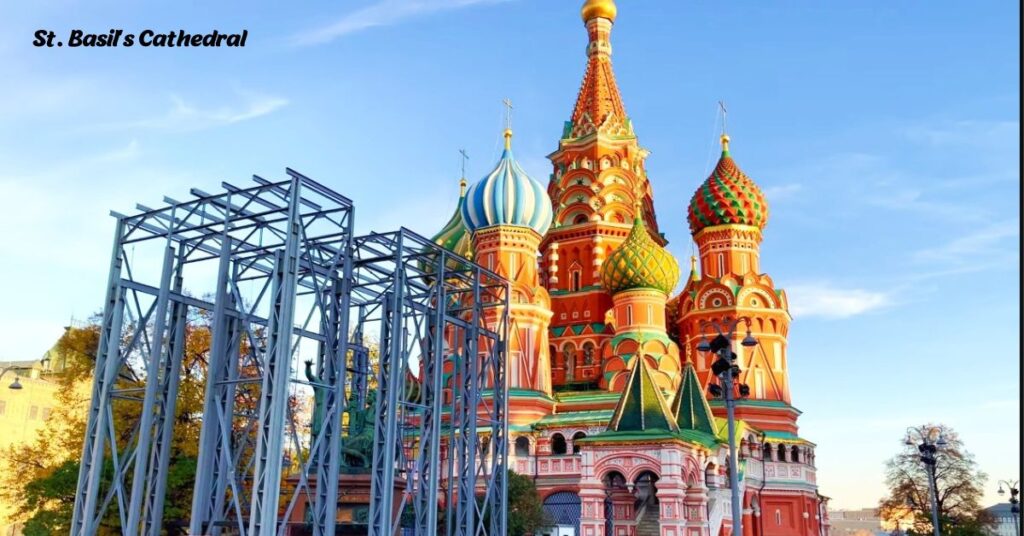
St. Basil’s Cathedral, also known as the Cathedral of the Intercession of the Virgin by the Moat, is a magnificent masterpiece in Moscow that dates back to the 16th century. It is renowned for its vibrant colors and unique onion-shaped domes. This architectural gem was constructed in 1554 during the reign of Ivan the Terrible, serving as a commemoration of the capture of Kazan.
The cathedral’s exterior is truly captivating, adorned with nine beautifully painted domes featuring intricate patterns and exquisite gold detailing. Beyond its visual splendor, the cathedral holds great historical significance. Each of the nine domes represents a saint venerated on the day of the capture of Kazan.
Additionally, a tenth chapel was later added, dedicated to Saint Basil the Blessed, a holy fool deeply revered by Ivan the Terrible. Today, St. Basil’s Cathedral serves as both a museum and a place of worship. Its interior is a labyrinthine network of chapels and chambers adorned with frescoes and iconostases. This iconic cathedral stands as a testament to Russia’s rich cultural heritage and artistic expression, captivating and inspiring visitors from around the globe.
3) The Kremlin
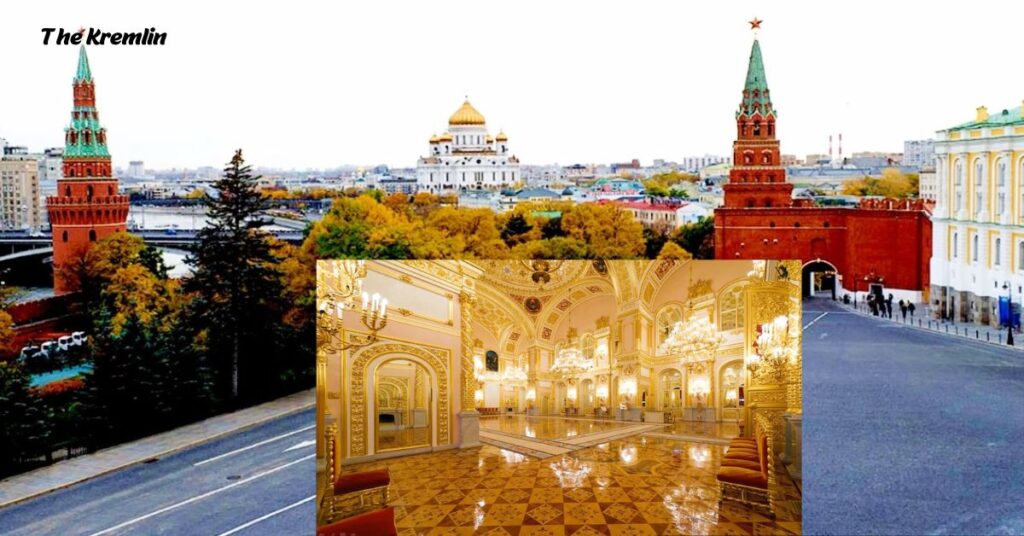
The Kremlin, located on the banks of the Moskva River, is a symbol of Russian history with its red-brick walls, 20 towers, and elegant green spires. Originally a wooden fort built by Prince Yuri Dolgoruky in the 12th century, it has evolved and been fortified over the centuries, becoming the prestigious residence of Russian rulers and the spiritual heart of the Russian Orthodox Church.
The Kremlin houses a treasure trove of architectural marvels, including majestic cathedrals, the Grand Kremlin Palace, the Ivan the Great Bell Tower, the Tsar Bell, and the Tsar Cannon. Beyond its palaces, the Kremlin serves as a living museum, housing an extensive collection of royal treasures and the State Museums of the Moscow Kremlin. Throughout its history, the Kremlin has symbolized power and authority, serving as the seat of the Russian Empire and the Soviet Union.
4) The State Tretyakov Gallery
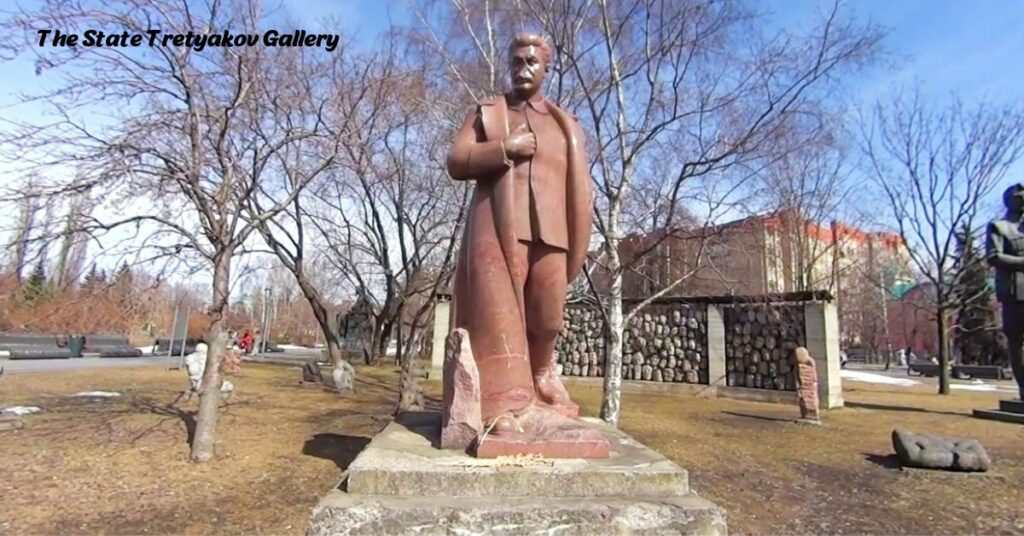
The State Tretyakov Gallery in Moscow is an art museum with over 180,000 works, showcasing the rich history of Russian art from the 11th to the 20th centuries. Established in 1856 by merchant and art collector Pavel Tretyakov, it showcases iconic masterpieces by renowned artists like Ivan Aivazovsky, Ilya Repin, Ivan Shishkin, and Vasily Surikov, as well as lesser-known artists’ talents in sculptures, drawings, and decorative arts.
The gallery’s stunning architecture, designed by Viktor Vasnetsov in the Neo-Russian style, and the modern New Tretyakov Gallery, constructed in the 1980s, add to its appeal. The gallery also serves as a cultural center, hosting educational programs, temporary exhibitions, and special events, providing a platform for artists, scholars, and art enthusiasts to immerse themselves in Russian art and culture.
5) The Bolshoi Theatre
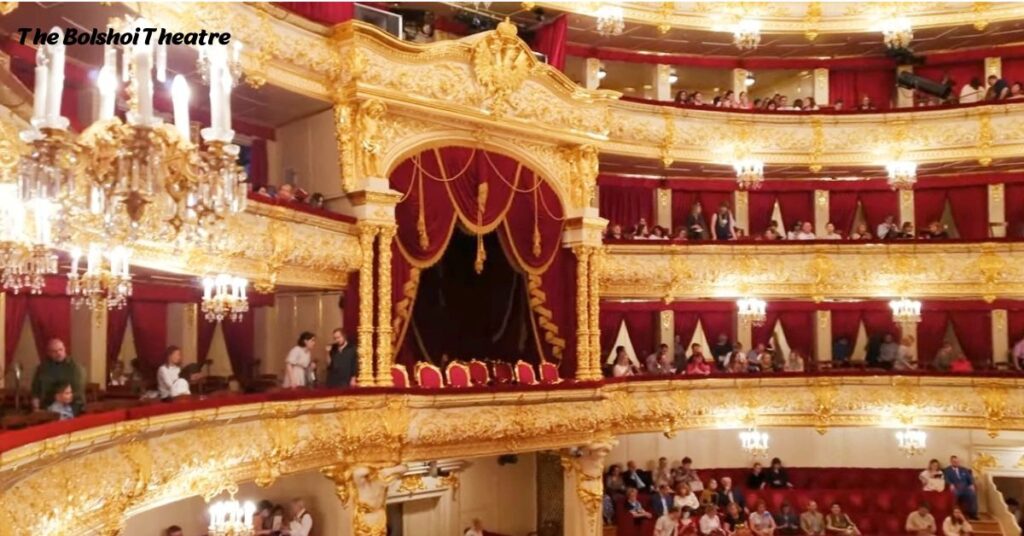
The Bolshoi Theatre in Moscow is a renowned opera and ballet theater known for its artistic excellence and cultural grandeur. Established in 1776, it has undergone several renovations and restorations. The theater is home to the Bolshoi Ballet and the Bolshoi Opera, featuring an exceptional roster of dancers, singers, musicians, and conductors.
The repertoire includes classical and contemporary works, including ballets like Swan Lake and The Nutcracker, operas like Carmen and Eugene Onegin, and new productions by contemporary artists. The theater’s architectural grandeur reflects its artistic prestige, with a neoclassical façade and a lavishly decorated auditorium with a seating capacity of over 2,000.
It also houses a museum and cultural center, offering a collection of costumes, set designs, and historical artifacts. The Bolshoi Theatre has become a global icon of artistic excellence, touring extensively worldwide and captivating audiences with its exceptional performances.
6) The Moscow Metro
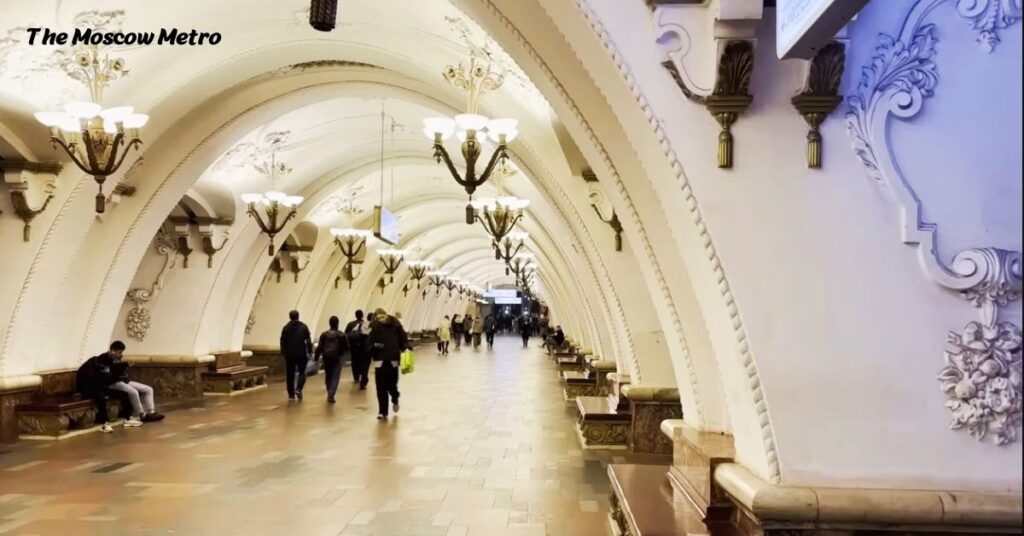
The Moscow Metro, also known as the “Palace of the People,” is a hidden world of beauty and grandeur beneath the city’s bustling streets. It’s not just a way to get around; it’s a captivating journey through art, history, and architectural wonders.
With more than 200 stations and 12 lines spanning 346 kilometers, the Moscow Metro is one of the most extensive and busiest subway systems in the world. What sets it apart is its artistic splendor, with many stations resembling magnificent palaces. Each station tells a different story, reflecting the artistic and ideological trends of the Soviet era.
Stations like Komsomolskaya exude grandeur and heroism, while Novoslobodskaya showcases the optimism and futuristic vision of that time. The Moscow Metro operates 24/7, making it an invaluable resource for both locals and visitors. Taking a ride through its breathtaking stations is an unforgettable experience that offers a unique glimpse into Russian culture and history.
7) Gorky Park
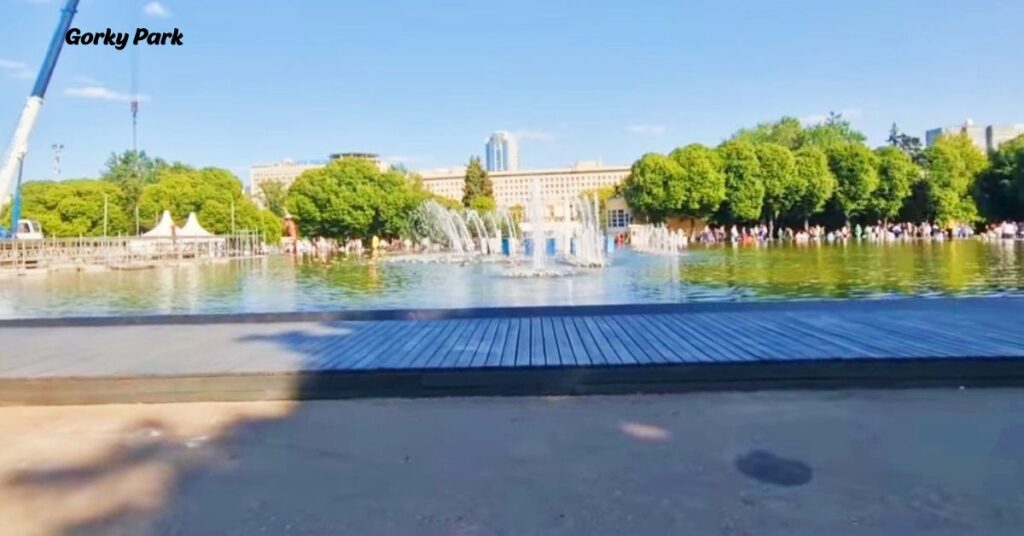
Gorky Park, named after writer Maxim Gorky, is a vibrant city center with a variety of activities for all ages and interests. Outdoor enthusiasts can enjoy cycling, rollerblading, and skateboarding, while thrill-seekers can enjoy the Gorky Park Rollercoaster and Euro-Star. Culture enthusiasts can enjoy open-air concerts, film screenings, and theatrical performances.
Families can enjoy the dedicated children’s area with playgrounds and interactive activities. Nature lovers can relax in the park’s lush greenery, while food enthusiasts can enjoy various cafes, restaurants, and food stalls. Gorky Park also promotes environmental awareness through its Green School, offering programs and workshops on recycling and composting.
The park’s revitalization has transformed it into a modern urban park, focusing on sustainability, accessibility, and entertainment options. Gorky Park is a must-visit destination for those seeking a glimpse into Moscow’s culture, a relaxing afternoon, or a fun-filled day.
8) Sparrow Hills
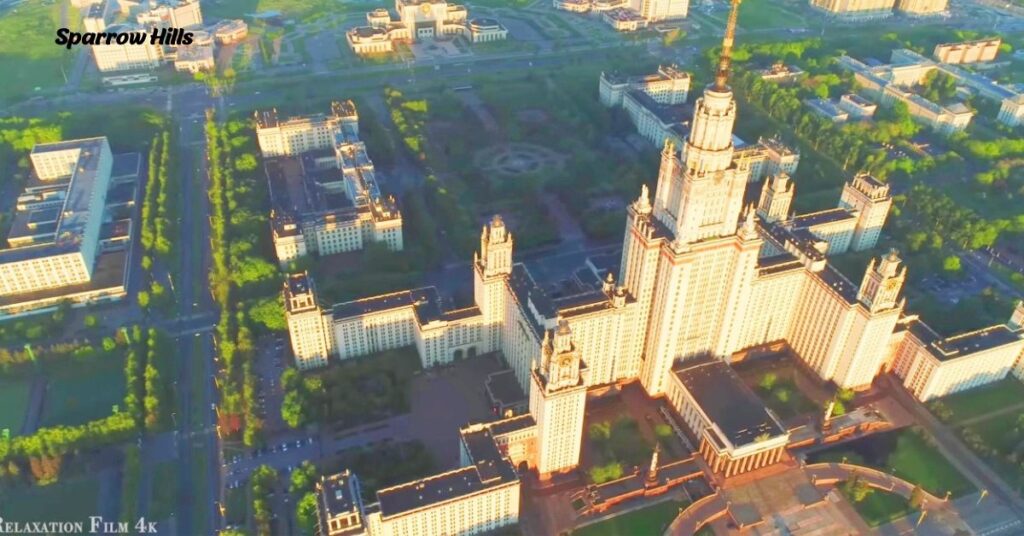
Sparrow Hills, also known as Vorobyovy Gory in Russian, is a majestic vantage point that offers panoramic views of Moscow’s cityscape. Rising 220 meters above the Moskva River, it offers a glimpse of the city’s historical landmarks, modern architecture, and the river.
Sparrow Hills has been a significant historical site, serving as a lookout point for defense and a popular picnic spot for Muscovites. The area was once home to a monastery, and the remains of a 16th-century fortified wall can still be found today. Beyond the panoramic vistas, Sparrow Hills offers a haven for nature enthusiasts, offering lush forests, winding paths, and natural springs for visitors to enjoy.
The hills are also a hub of cultural activity, with Moscow State University and Gorky Park providing various entertainment options. Sparrow Hills transforms into a winter wonderland when snow falls, offering slopes for skiers, snowboarders, and sledders and enchanting views during the warmer months. As a must-visit destination for history buffs, nature lovers, and those seeking a breathtaking view of Moscow, Sparrow Hills offers something for everyone.
9) GUM
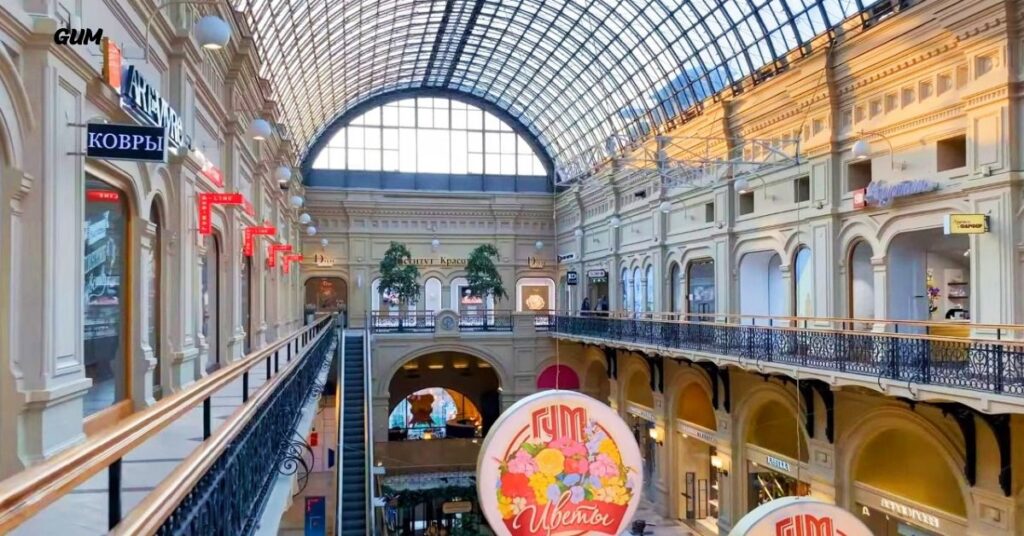
GUM, a 19th-century department store in Moscow, is a symbol of luxury and history. Built in 1893 by Russian architect Alexander Pomerantsev, it houses over 100 luxury boutiques offering a wide range of high-end fashion, jewelry, cosmetics, and accessories. The store is not just a shopping destination but also a cultural hub, blending history and modern life.
Visitors can explore the elegant halls with mosaics and stained glass windows or dine at cafes and restaurants. The GUM Cinema, housed within the building, provides a unique atmosphere for film screenings and special events. GUM has been a backdrop for pivotal moments in Moscow’s history, and its iconic facade has been featured in numerous books and films.
10) Pushkin Museum
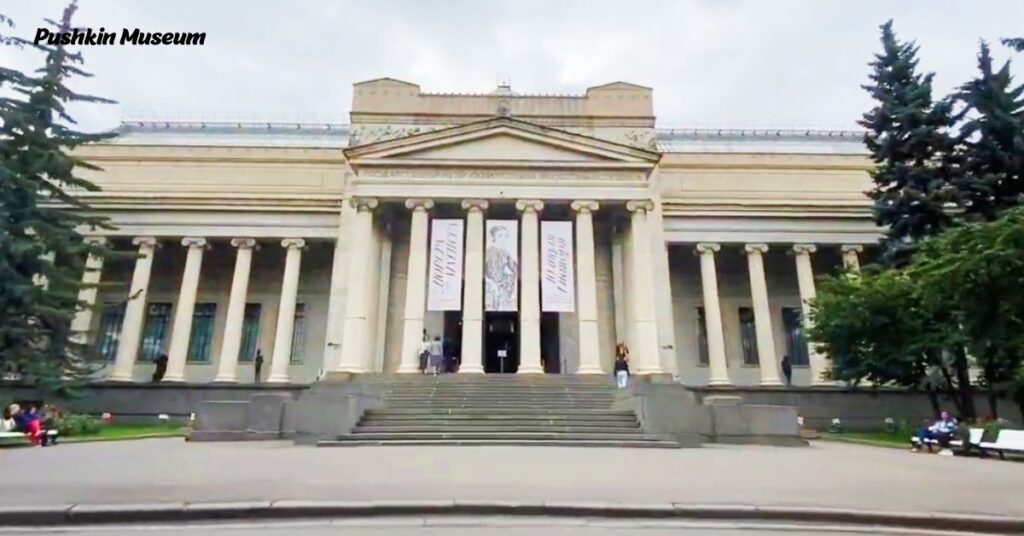
The Pushkin Museum, a world-renowned institution with over 700,000 artifacts, is located on Volkhonka Street. Established in 1912, it showcases diverse artistic expressions across time and cultures, including Byzantine icons, Russian avant-garde art, and Japanese woodblock prints.
The museum complex consists of several buildings, each with its own unique architectural style. The main building, designed by Roman Klein, features a neoclassical facade with grand columns and intricate detailing. Other notable structures include the Museum of Private Collections in an Art Nouveau mansion and the Gallery of European and American Art with a modern glass-and-steel facade.
The museum is not just a repository of artifacts; it also hosts temporary exhibitions, lectures, workshops, and educational programs. The museum’s library houses a vast collection of books and periodicals on art history. It plays a vital role in fostering cultural appreciation and dialogue by offering free admission for children under 16, discounted tickets for students and seniors, and participating in cultural exchange programs.
11) Novodevichy Convent
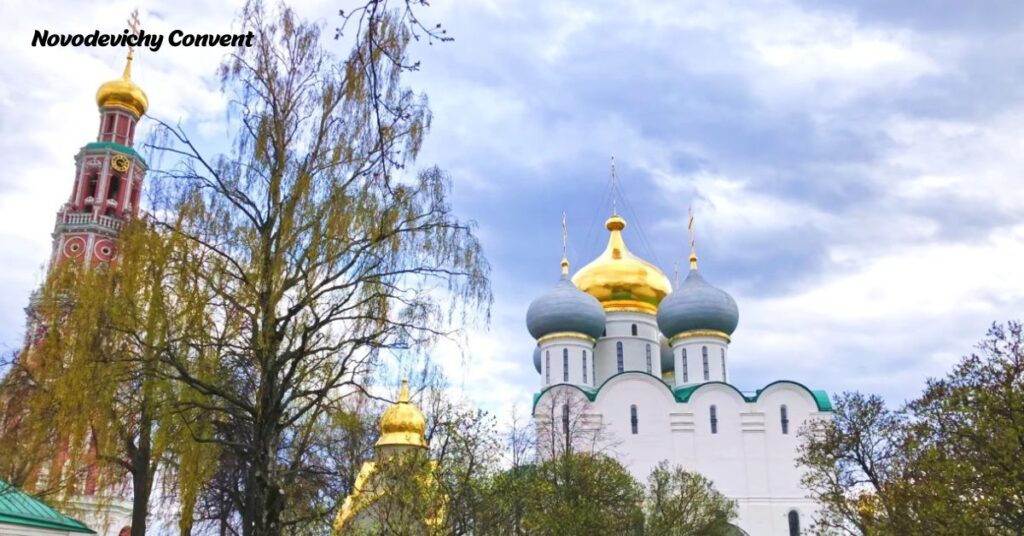
The Novodevichy Convent, a UNESCO World Heritage Site in Moscow, is a sanctuary for noble women, including daughters of Tsars and aristocratic families, offering a glimpse into the traditions and practices of the Russian Orthodox Church.
The convent features the iconic five-domed Smolensk Cathedral, Intercession Church, Refectory Church, and bell tower, as well as a museum showcasing frescoes, icons, and other religious artifacts. The grounds also house the renowned Novodevichy Cemetery, where prominent figures are laid to rest. The tranquil atmosphere, splendid architecture, and diverse offerings invite visitors to immerse themselves in history, faith, and the enduring legacy of Russian culture.
FAQs
-
What makes Red Square so memorable?
The Kremlin and Saint Basil’s Cathedral surround Red Square, which is famous for its historical significance. It is a UNESCO World Heritage site and represents Russia’s cultural wealth.
-
What kinds of cultural experiences does the Bolshoi Theatre provide?
The Bolshoi Theatre is a cultural center where world-class ballet and opera performances are held. Aside from its historical significance, it will continue to be a venue for artistic excellence in 2024.
-
What is the significance of Saint Basil’s Cathedral?
The vibrant onion domes and intricate architecture of Saint Basil’s Cathedral are well known. Each dome represents a different church, resulting in a visually stunning display that reflects Russia’s religious heritage.
-
What can visitors expect when they go to visit the Kremlin?
The Kremlin is a historically significant fortress that houses government buildings, cathedrals, and the presidential residence. Visitors can marvel at its architectural marvels, learn about Russian history, and see the seat of political power.
